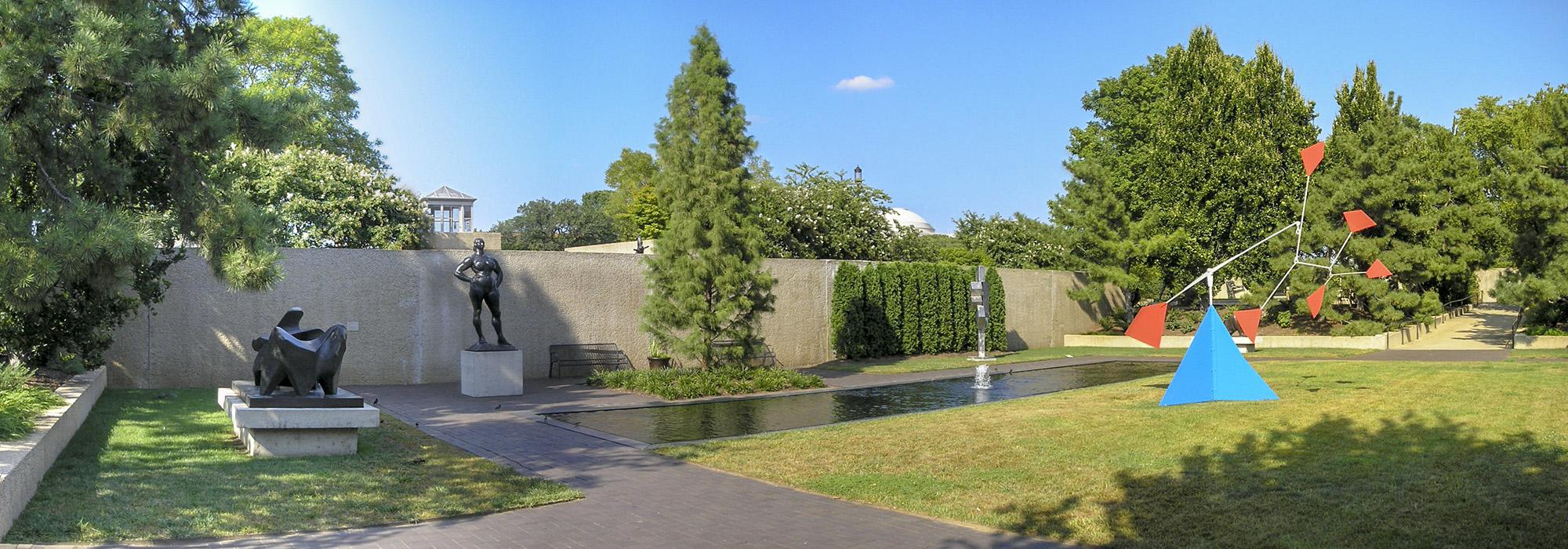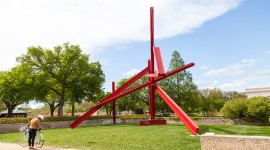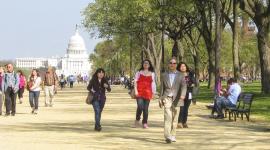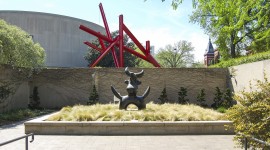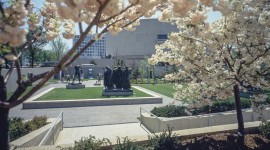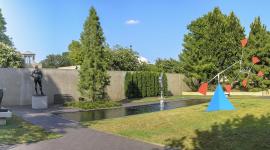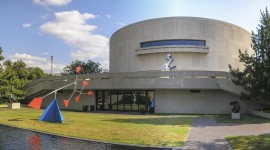Playing Peek-a-boo at the Hirshhorn
The campaign by Hirshhorn and Smithsonian officials to secure approvals for the Sculpture Garden revitalization is following a familiar plot line. They hail as a virtue all of the Section 106 meetings they are legally required to convene, say they’re considering all of the comments by “official consulting parties,” and, importantly, claim that they’re being transparent in the process. But there are limits to that transparency.
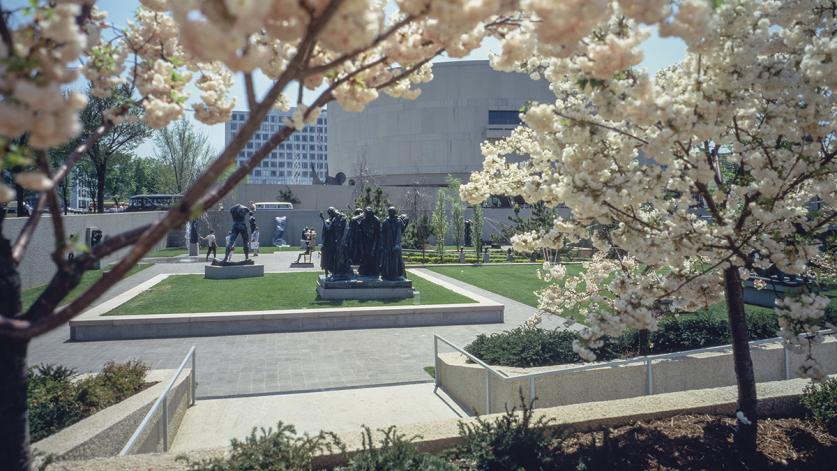
Case in point. On July 16, 2020, the New York Times ran an article about the proposed revitalization of the Hirshhorn’s Sculpture Garden: At the Hirshhorn, a Battle Over Plans for Its Sculpture Garden. The article discussed the two controversial elements of the Hiroshi Sugimoto design – the introduction of stacked stone walls into the Modernist campus and substantial alterations to signature rectangular pool – identified by official consulting parties including D.C. Historic Preservation Office, The Cultural Landscape Foundation (TCLF), Docomomo U.S., and others as the most egregious problems associated with the project.
The article apparently hit a nerve. Hirshhorn and Smithsonian officials called the Times reporter and her editor demanding a correction, despite the absence of any errors of fact to correct. Nevertheless, a week later the Times printed a “correction” noting that the redesign had supporters and included a new paragraph about the more than two dozen letters of endorsement the institutions had received from art and design leaders including Glenn Lowry, director of the Museum of Modern Art in New York City, architect David Adjaye, the American Institute of Architects D.C. chapter, and others.
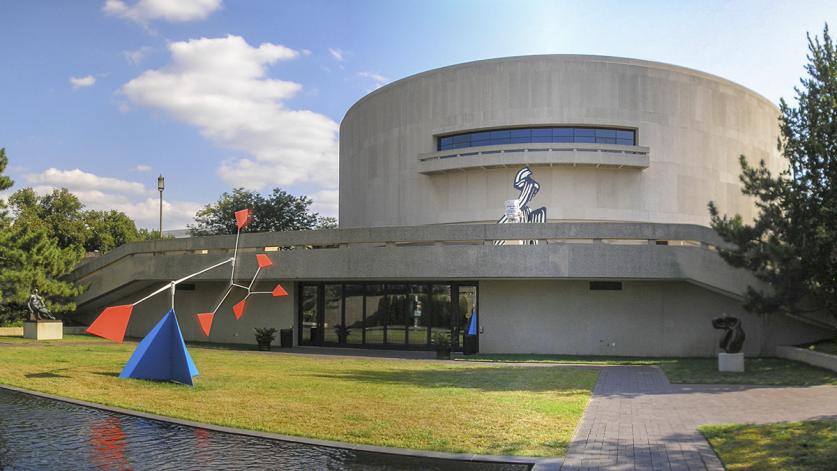
We requested copies of the letters, but Hirshhorn and Smithsonian officials said the letters were “not publicly accessible.” On July 27, the Smithsonian’s historic preservation specialist wrote that we could “request copies of the letters … through the Office of General Counsel” and included a hot link to information about filing an SD 807, the Smithsonian’s equivalent of a Freedom of Information Act (FOIA) request. We followed their advice and filed an SD 807. Remarkably, on September 1, the Smithsonian’s historic preservation specialist and the Hirshhorn’s director of communications contacted us and wrote: “We were surprised you felt it necessary to …[request] the release of the letters by going through the Smithsonian’s Office of the General Counsel.”
On Friday November 13, the copies of those same letters from museum directors, architects and others suddenly appeared on the website of the National Capital Planning Commission (NCPC), as part of the Hirshhorn’s filing in advance of a December 3 hearing. Following our prompt, a couple of hours later the Office of General Counsel sent TCLF the letters.
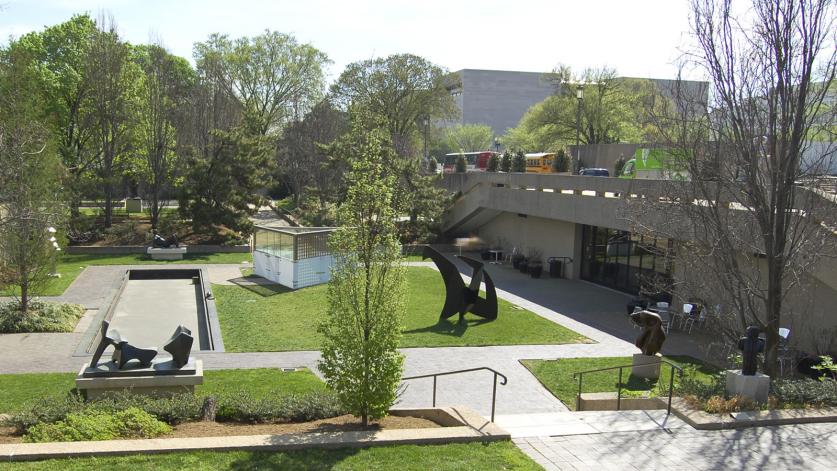
There was a noticeable difference between the letters submitted to the NCPC and the letters TCLF received. In the latter package there was a February 7, 2020 email to Hirshhorn associate curator Anne Reeve from Henry Moore Foundation director Godfrey Worsdale with this preface.
How nice to hear from you, and Happy New Year to you too. Thank you for the chance to contribute to your campaign. I offer a statement below. If it needs to be amended or added to before it serves the necessary purpose, please just say and I’ll amend accordingly.
Very best wishes, and good luck with the lobbying.
That preface was not included in the letters submitted to the NCPC.

It would appear that the Hirshhorn solicited these letters of endorsement, with most, 20 of 28, coming in April. What stands out in all of these is the general lack of specificity about the design details, little assessment of the addition of new design elements to the historic designed landscape, little mention of its national significance or the integrity of the Gordon Bunshaft and Lester Collins design, and no mention of Collins at all. The letters are relatively anodyne with a number offering praise for Sugimoto. All this suggests the Hirshhorn and Smithsonian were looking to offset the pointed observations in the letters from “official consulting parties”; it also raises questions about whether they were fully transparent in their solicitations and if the letters’ authors were aware or apprised of the controversial aspects. It remains to be seen if this promotional letter writing campaign will be persuasive at the NCPC and elsewhere, especially when considered alongside the very detailed and site-specific comments provided by Section 106 “official consulting parties.”
The limits of transparency are also evident in muddled and evasive answers to specific questions about proposed design elements. For example, Hirshhorn and Smithsonian representatives have repeatedly said the stacked stone walls are necessary for the presentation of performance and new forms of art, yet when asked about this at the October 7, 2020 Section 106 meeting, Hirshhorn director Chiu replied:
Yes, thanks … so I think where the stone stacked walls began as a design idea it was really wanting our ah collection, especially our collection of modern works like those from Rodin, Barbara Hepworth, Henry Moore and others, to be able to be shown in a way that really emphasized their modern qualities. The fact that they were in their creation, in their time of creation, very radical sculptures. And so, by creating stone stacked walls which are pre-modern um kind of creation, the stone stacked walls being this universal um pre-modern way of creating uh, uh, a partition, um it allowed us to show the modern sculptures with uh, in their fullest way. So, when you, when we, and when we place them place them in the sculpture garden against the stone stacked walls it was the case that it really allowed the modern works to step forward and the stone stacked wall became that pre-modern backdrop. And so, we, it began really from wanting to present the modern artworks and then it evolved from there to be a um a way of ah Sugimoto being able to design something that was distinct from the Bunshaft walls, um and, to some extent the Lester Collins plantings and other ah additions. So that we would be able to um unite then the campus of the sculpture garden. So, it kinda started with the east gallery and the modern works and then evolved through there and we believe that the stone stacked walls is is in fact our own kind of 21st century design addition to what is essentially an evolving space that just as our um, our mission is evolving as artists evolve their own voices and the way that they present contemporary art then we are also evolving in response to that.
The meeting was replete with responses like the one above.
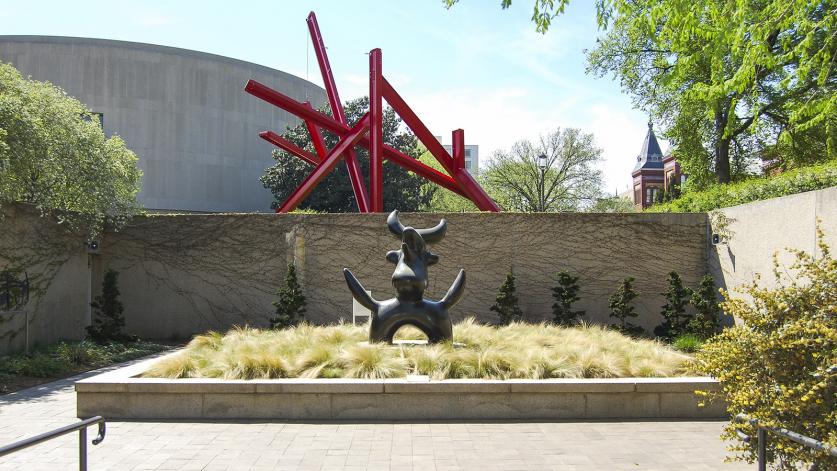
Finally, in another troubling development, we have seen correspondence in which Smithsonian officials have requested Smithsonian consultants unconnected with the Sculpture Garden project to provide letters of support and/or attend and testify at Section 106 meetings. Perhaps this explains the presence of a representative from Perkins & Will, a Smithsonian consultant, who provided comments in support of the project. These actions may suggest a quid pro quo and the appearance of impropriety, because the Smithsonian’s contractors would have felt pressured or obligated to provide the requested endorsement in order to avoid the risk of being viewed less favorably for future work.
What’s recounted above is a window into a review process that began when the Hirshhorn announced the proposed Sculpture Garden redesign in April 2019 and will continue to play out at the NCPC, U.S. Commission of Fine Arts, Section 106 meetings and elsewhere. There’s no doubt that the Sculpture Garden revitalization is much needed and TCLF is supportive of a vast majority of the proposed interventions. However, with a less than transparent and authentic review process, it’s difficult to assess the merits of this case.



